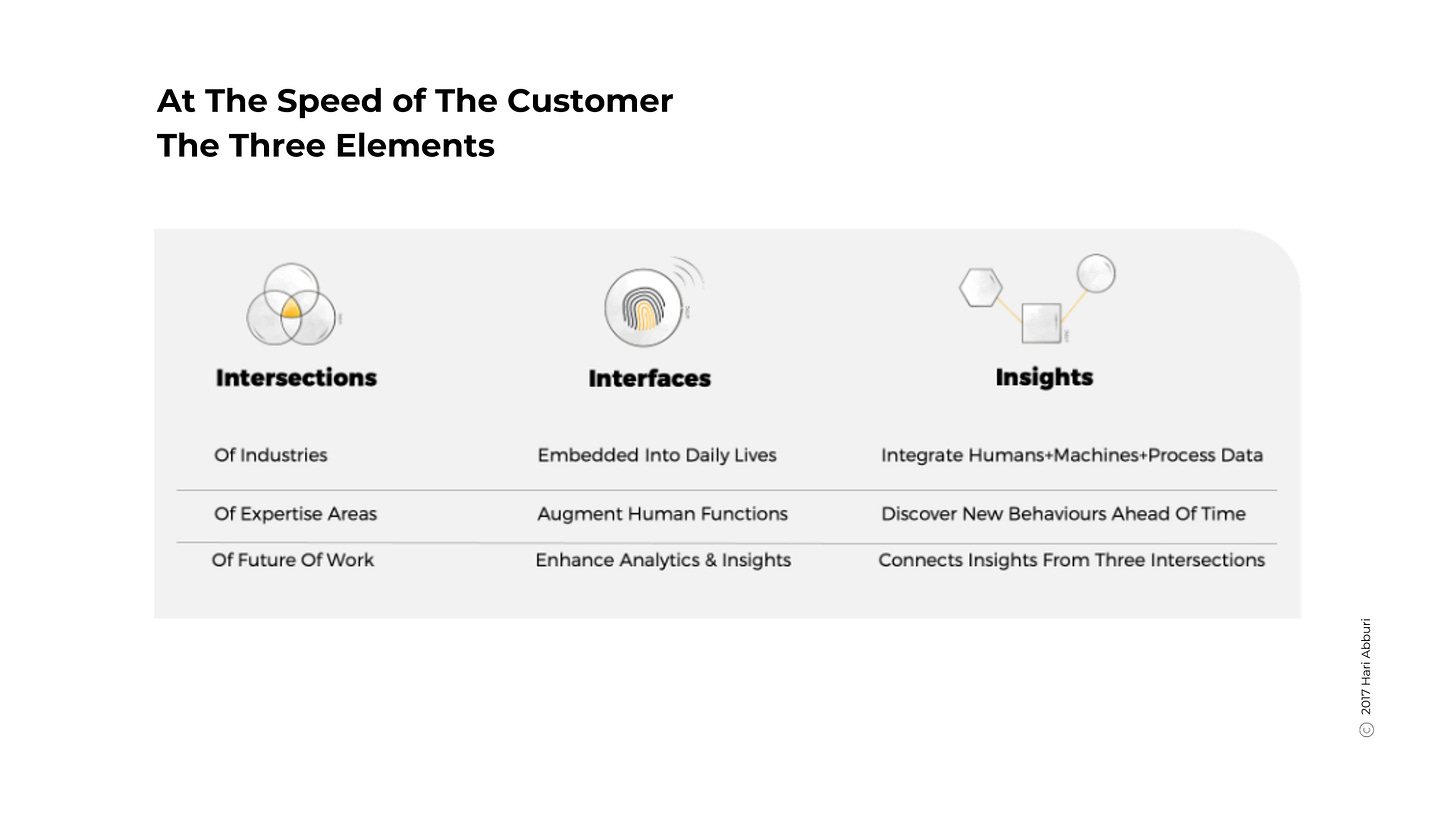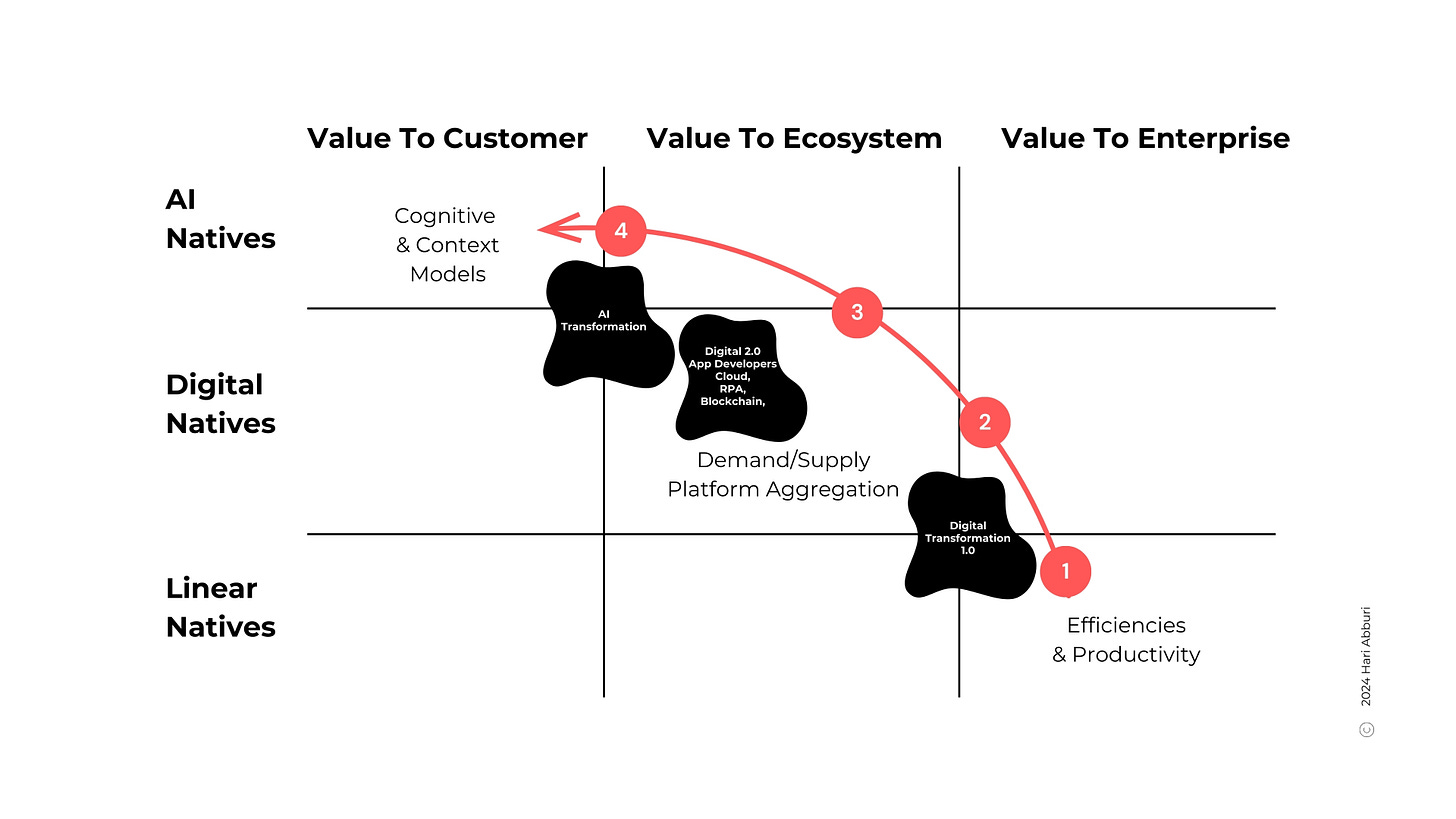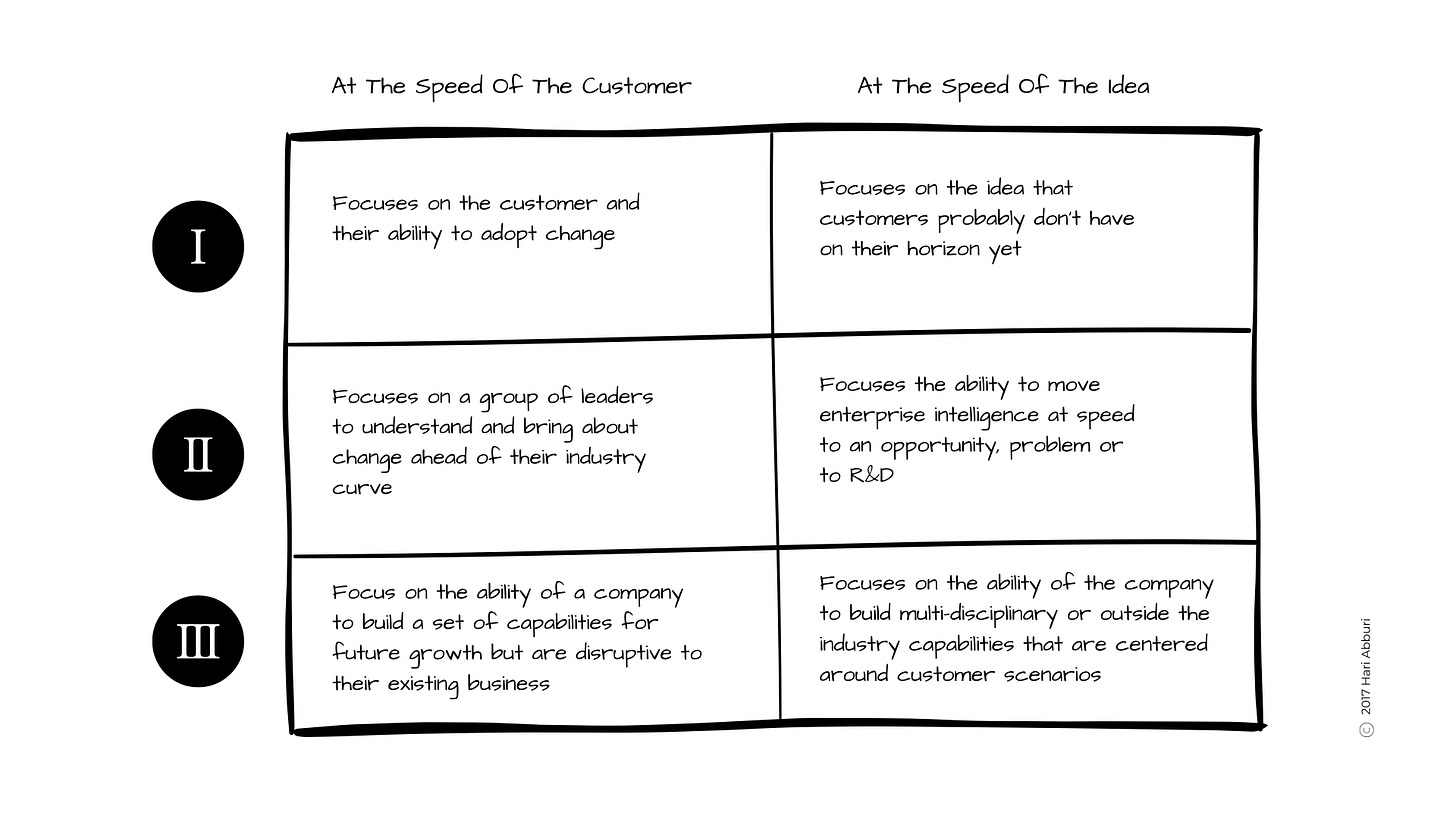Agility In Age of AI: From Being Customer-Obsessed To Being Ideas-Obsessed
Ideas As The Real Competitive Advantage
My agility focus started in 2017
[Introducing ‘At the speed of the customer’ to MOL Global HR Summit Audience, Budapest, 2017]
In 2017, I had the opportunity to travel extensively to spend time with high-growth companies in Germany, UK, US, India, Singapore and China. Many of these were start-ups. I tried to understand why and how these companies managed hyper-growth while continuing to stay on top of their disruptive impact in their industries. I examined their strategies, business models, technologies, organization, talent and leadership.
I finally narrowed down my interest to 47 companies across these countries to compare, understand and learn why they were so compelling and different to the rest of the industry they played in.
These learnings led me to define agility as ‘Being at the speed of the customer’. This has three elements - Intersections, Interfaces and Insights.
I explained this model as a flywheel that started with the ability to follow the customer across industry influences and boundaries. Shaping strategy at this intersection was critical to agility. This was the flywheel of customer centricity that allowed them to be disruptive with great speed.
You cannot be agile without agility as a principle in the strategy itself. Single industry thinking is dead.
Over the years, I have explained ‘Being at the speed of the customer’ through my writings, talks and a custom executive education course with Caltech Executive Education, ‘Leading at The Speed of The Customer’. I have covered over 400+ leaders worldwide, in the past seven years through this course.
In this, discussions often hits the wall of known barrier - internal Vs. external customers. To me it is very clear, there is only one customer, the one who buys your products, services and enjoys the brand experience you provide. Everyone else internally are layers causing friction while you serve the customer.
But as I reflected on this model through these years, especially over the past three in which we see the transition from Digital Natives to AI Natives, I began to question if customer-centricity was the holy-grail for agility, especially when the unknowns exceed the knowns.
This is what I realized about ‘Being At The Speed of The Customer’:
First, as much as my framework focuses and emphasizes on innovation and strategic choices as an outcome of cross-industry or multi-industry thinking, customer-centricity often became more of a productivity focus - faster, better, cheaper.
Second, it relied on an assumption that following the customer across industry boundaries or delivering to ideas to the customer that were cross-pollinated with a multi-industry view meant that the customer knew what they wanted. So it kept leaders focussed on playing to the perceptions of customers than delivering breakthrough products or services.
Third, Leaders found it difficult to understand that changing how you serve the customer meant reimagining how work is done. This flys in the face of another key element in my model - that to innovate, you have to often build new capabilities which were often unnatural to the existing state of your business or industry.
Now let’s layer in the shifts we are seeing in the transition from Digital to AI Natives, redefining what agility means.
Today, with AI, every company is in multiple complex loops of transformation - at the same time. The key to managing this is to be ideas-centric. Competitive advantage is from ideas, not from technology, that’s where the shift happens.
The Shift: Rethink ideas as the real value to the future of your business in a technology-world where knowledge is increasingly a commodity
In my new book Ideas Don’t Die, Companies Do, I deliver an insightful set of frameworks for leaders to future proof their companies by creating an idea obsessed enterprise. In the book, you’ll learn why ideas are more important than customers to disrupt the industry and marketplace.
I explain how to distinguish between ideas that are truly original and those that require strategic execution to differentiate them from other choices on the market. I offer key insights into how to glean information from other companies who have worked with the idea and how to apply that knowledge to your firm’s own idea.
Thinking On The Four Edges
My "thinking on the edges" model describes four key ‘edges’ where companies face conflicts that can either promote or hinder breakthrough ideas. These edges involve tensions that significantly impact a company's ability to innovate and sustain ideas over time. The four edges are not a transition from one to another but a lateral and parallel thinking process. Breakthrough ideas come from "thinking on the edges," balancing conflicting priorities and overcoming biases.
Building Unnatural Capabilities
To be ideas-centric, companies must develop capabilities outside their core expertise, breaking industry molds and redefining market expectations. This involves companies identifying and developing capabilities that are not natural to their existing state of business or industry. I emphasize that building unnatural capabilities requires a combination of strategic vision, cultural change, and a willingness to embrace new technologies and ideas.
Moving Intelligence
I explain moving intelligence is key to building ideas. This involves rapidly transferring learnings from applying an idea across different contexts. Moving intelligence as a critical competitive advantage for companies in the digital world, especially as AI increasingly commoditizes knowledge. Companies that can effectively move intelligence are better positioned to adapt, innovate, and compete in the rapidly evolving digital landscape.
Three Principles of Exponentiality
Finally, I lay out that the convergence of purpose, curiosity, and design drives exponential value, enabling organizations to innovate holistically.
Also On WATERSTONES | INDIGO | BOOK SHOP | TERTULIA







